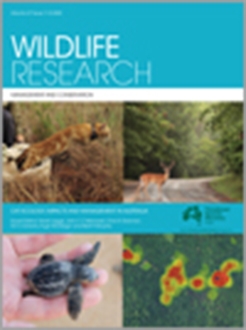Context. Management of wild horses (Equus caballus) on public lands in the western United States by gathering and removing surplus animals has historically failed to keep up with annual population growth. Research has yielded several effective contraceptive agents but these agents have not been widely applied, especially on difficult-to-access horses occupying expansive ranges.
Aims. This study examined wild horse population growth reduction associated with controlled-release PZP-22 immunocontraceptive vaccine treatments in two challenging herd management areas (HMA) in the western United States.
Methods. Populations of wild horse herds at Cedar Mountain HMA, Utah (CM), and Sand Wash Basin HMA, Colorado (SWB), USA, were primed with PZP-22 in gathers conducted in 2008 and 2012 (CM only) and boosted with PZP-22 or native PZP administered by dart (SWB in 2010) or by hand (CM in 2012). The two herds were intensively observed between 2008 and 2015. Population size, mortality, reproductive rates and growth rates were calculated from exhaustive inventories of known individuals.
Key results. Adult and foal mortality were low at both sites. Consequently, both reproductive rates and population growth rates were strongly predicted by a fertility control index, the product of proportion of mares treated and vaccine efficacy. Following the 2012 CM gather, at which 69% of the mares present were treated, only 20% of mares in the herd foaled, and population growth rate decreased by 74% relative to baseline levels, emphasising the importance of treating a large majority of mares.
Conclusions. Contraception can significantly reduce rates of population growth in wild horse herds that occupy large areas and are challenging to access. Multiple-year efforts and recruitment of new mares into the treatment population beyond the initial application are needed to achieve a biologically significant impact.
Implications. The strong quantitative relationship between proportion of mares treated and vaccine efficacy and population growth rates should allow managers to better forecast the effort and number of removals (if any) needed to cost-effectively regulate wild horse population numbers and protect the range ecosystem.






